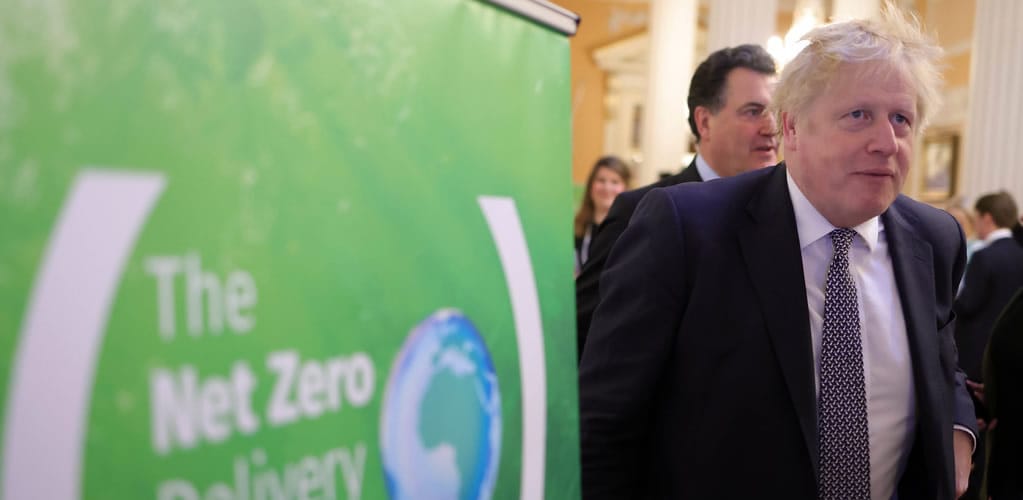Government doesn’t know whether it will achieve its 2032 Net Zero target.
Has the government been achieving its ambition for the public sector to be a leader in decarbonising its activities? Difficult to say as measurement and reporting of greenhouse gas emissions by public bodies are inconsistent and not streamlined.

Has the government been achieving its ambition for the public sector to be a leader in decarbonising its activities? Difficult to say as measurement and reporting of greenhouse gas emissions by public bodies are inconsistent and not streamlined.
First published: June 2022.
The government has made progress in reducing its greenhouse gas emissions but the way public bodies measure and report this varies significantly, according to the National Audit Office (NAO), the independent Parliamentary body that scrutinises public spending and helps Parliament hold the government to account.
Since 2011, central government bodies (government departments and their partner organisations) have agreed on targets with the Department for Business, Energy and Industrial Strategy (BEIS) to reduce their greenhouse gas emissions through the Greening Government Commitments (GGCs). The current GGC targets set by BEIS in negotiation with individual departments specify the reductions departments are expected to achieve by 2024-25, compared to a 2017-18 baseline. These targets range from achieving a 10% reduction to a 43% reduction in direct emissions and a 27% to 69% reduction in overall emissions.
The government has committed to align these targets with a trajectory to achieve net-zero by 2050. However, there is no single department at the centre of government that holds overall responsibility for the framework for measuring and reporting of public sector greenhouse gas emissions. The Department for Environment, Food and Rural Affairs (Defra) has responsibility for GGCs. The Department for Business, Energy and Industrial Strategy leads on net-zero, and the emissions-related aspects of the GGCs. HM Treasury (HMT) sets sustainability reporting requirements for annual reports and accounts.
Without free, impartial, and fact-based media, information and democracy will always be controlled by governments and those who control the media. Support PMP Today!
CHIP IN or DONATE REGULARLYGareth Davies, head of the National Audit Office, said, “The government has an ambition for the public sector to lead by example during the transition to net zero, but the measurement and reporting of greenhouse gas emissions by public bodies is inconsistent.
“Public bodies face the challenge of navigating various greenhouse gas emissions reporting frameworks without a central source of government guidance. The government now needs to strengthen its leadership and establish a clear standard for the entire public sector to meet.”
By 2020, central government reported that it had reduced its greenhouse gas emissions by 50% compared with 2009-10 – and had therefore achieved its combined Greening Government Commitments target. The government attributes this to the improved management of the government estate and the decarbonisation of the national grid. However, the GGCs do not give a full picture of progress in reducing greenhouse gas emissions across the public sector. Emissions from the wider public sector – hospitals, schools and local authorities, for example – are outside the scope of GGCs.
“There is no single location bringing this information together.”
It is not clear, however, that the GGC 2021-2025 targets are sufficiently ambitious, the National Audit Office notes. The Net-Zero Strategy stated an aim to reduce greenhouse gas emissions from public buildings by 50% by 2032, and by 75% by the end of 2037, compared with 2017 levels. The GGC emissions reduction targets for individual departments range from 10% to 43%. But the Department for Business, Energy and Industrial Strategy does not currently know whether together these will achieve the 25% reduction in aggregate emissions by 2025, which is needed to stay on course to meet the 2032 target.
According to the NAO, some public bodies have found it challenging to navigate the range of guidance about how to measure and report greenhouse gas emissions. Because HM Treasury, BEIS, Defra, and the Cabinet Office all publish their own guidance, organisations end up having to cross-check multiple documents to ensure nothing is missed. There is no single location bringing this information together.
Some prospered during the pandemic & claimed hundreds of millions of pounds from the government’s furlough scheme. PMP received nothing. Help us as we crowdfund to make sure we continue our work.
Please CHIP IN to keep us going!Also, not all departments are fully measuring their greenhouse gas emissions. The NAO found that for 2018-19 – before reporting was suspended during the COVID-19 pandemic – only nine of 21 government departments fully met HM Treasury’s reporting requirements in their annual report and accounts.
Some central government organisations are using data to assess the cost implications of reducing their greenhouse gas emissions. The NAO examined nine organisations and found that Defence Equipment and Support and the Department for Work and Pensions had estimated the cost of decarbonising some of their operations. Some organisations had made plans to reduce the financial cost of decarbonisation by replacing assets (such as gas or oil-fired boilers) with lower-emitting alternatives as part of their routine asset renewal cycle.
The National Audit Office recommendation is for the Department for Business, Energy and Industrial Strategy, Defra and HM Treasury to streamline greenhouse gas emissions measurement and reporting guidance. The NAO also considers that the Department for Business, Energy and Industrial Strategy should ensure that the 2021-2025 Greening Government Commitments targets are aligned to its long-term decarbonisation goals.

GOING FURTHER:
- Measuring and reporting public sector greenhouse gas emissions [Full report] | National Audit Office
— AUTHORS —
▫ PMP News reporting.
Sources
- Text: This piece was first published in PMP Magazine on 13 June 2022.
- Cover: Flickr/Number 10. (Licensed under a Creative Commons Attribution-ShareAlike 4.0 International License.)







[Read our Comments Guidelines]